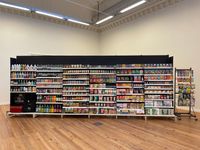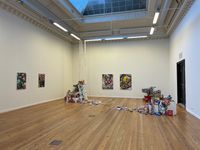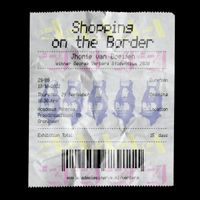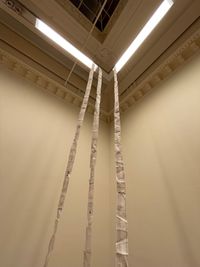Shopping on the borderline.
(Pictures at the end of the page)
Since the 1950’s the borders between the Nordics are open to each other to do business, shop and work abroad without needing a passport. During these times the phenomena of Harryhandel appeared, Harryhandel is named after a Norwegian word for vulgar or tasteless, but has become very common throughout the Nordics. Between the border of south Norway and Sweden this has been playing a big role since the taxes on Norwegian produce like tobacco, alcohol, dairy, meat and even sugary goods are getting raised almost every year. Sweden played with this concept and developed a strategy that would be beneficial for the border region between south Norway and Sweden, a win-win for the Norwegian who want to get cheaper groceries and the set-up of a mass business for Strömstad Sweden. There even has been put up websites to show you the difference in price from both sides of the borders with tips and trick.
Nordby is the biggest Mega mall of Scandinavia and is the home to 110 shops and restaurants, included is a grocery store called the Nordby supermarket with 200 meters fresh produce and 200 meters frozen goods. Because of the Norwegian lockdown the supermarket had no other choice than to throw out almost 90% of their fresh produce due to the lack of foreign customers. Charlottenburg, a town near Strömstad, is the home to 2.000 people, here you can find another Maximat supermarket, estimated there are enough stores for 50.000 people in this region. The economic structure of this enormous shopping centre collapsed when the customers, from all the way up to Oslo, could not visit anymore. On the other hand, for the local businesses in Norway this was not that bad. Grocery stores in the border region have reported an increase in sales of 70% and up.
Officials are afraid that the Covid-19 lockdown situation will leave permanent damage in the Nordic cooperation and the tradition of the harry handel now people start noticing the impact that cross border trade has on the local economics. After the Norwegian lockdown the economic system went 72 years back in time and reintegrated a more local form of consumerism that has been incredibly beneficial for the local stores in Norway while at the same time the Nordby shopping centre got turned into a Ghost town. The Nordby shopping centre has been since the opening the thriving heart of this region while now it has been making just 5% revenue of what it normally generates. The convergence of circumstances shows how much an international disaster can influence the economic system of a small area and why, especially in these times, communities are still important inside of our globalized environments.
A big part of the project will be the exploration of these unknown grocery stores/supermarkets and to get familiar with the products that they are offering. I am looking forward collecting special packages of products that are popular in these areas so I can use these for later research and an installation that I am planning to make. The installation will be based on the different stores/markets and will be rebuild from pictures taken on the journey, from sky high monumental shelves to very intimate displays of food. The products will be a mix between anything that is popular and I can get my hands on, from the famous knäckebröd, to canned goods and sweets and treats.
Apart from this installation I am planning to make a series of paintings called “Shopping on the border line” with the intention of making people aware that consumerism, psychology, culture and identity are still more aligned with each other than you can see at first glance. I want to use the research to create a portrait of the individual consumer based on the choices of their groceries. These paintings will be presented together with the installation to create independent spaces where you can encounter a reflection of the experience the shopper must have felt during his/her shopping trip.
A big part of the project will be exploration of the different unknown grocery stores/supermarkets and to get familiar with the products that they have to offer. I am looking forward collection special packages of products that are populair in these areas so I can use these for later research and the installation that I am planning to build. The installation will be based on the different stores/supermarkets and will be rebuild from pictures taken on the journey itself. The products that will be displayed in the installation will be a mix between anything that is popular and I can get my hands on, from the famous knäckebröd, to canned goods and sweets and treats. After the exhibition the food will be donated to the food Bank Groningen.
I would like to thank everyone that has helped me make this amazing show possible. Even though the chapter of Sweden and Norway has come to an end, this project will be used as a base to explore consumer behaviour and grocery stores in other countries all over the world!





